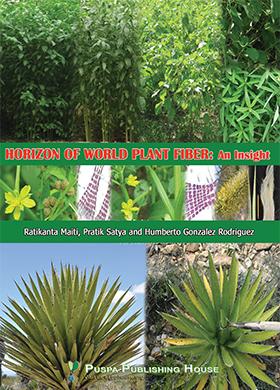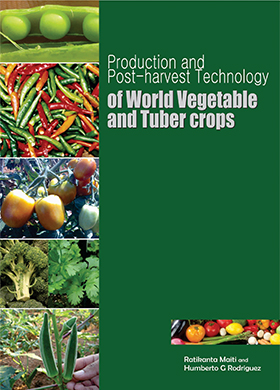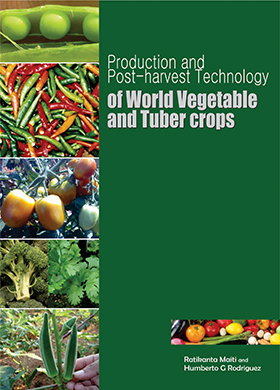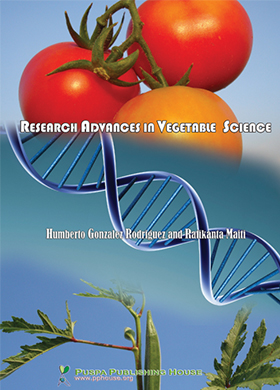Research Article
Flowering Intensity and Sex Ratio of Ber (Ziziphus mauritiana Lamk.)
T. Adhikary, S. Kundu, P. Chattopadhayay and B. Ghosh
- Page No: 107 - 112
- Published online: 05 Apr 2019
- DOI : HTTPS://DOI.ORG/10.23910/IJBSM/2019.10.2.1954
-
Abstract
-
trinaadhikaryhort@gmail.com
The field investigation was carried out at Horticultural Research Station, Mondouri, North 24 Parganas, B.C.K.V., West Bengal, India during 2015-16 with an objective to understand and provide a wealth of usable information of ber flowering and sex ratio in relation to ber breeding programme. Plant breeders look for ideal plant types or ideotypes in order to combine maximum desirable traits in a cultivar. For efficient and purposeful breeding programme, it is necessary to have knowledge of the floral morphology and biology of the parents. Keeping this in view, the experiment was laid out by Randomized block design (RBD) with three replication and fourteen varieties (Apple Kul, Banarasi Karaka, BAU-1 Kul, Chhuhara, Dandan, Gola, Illaichi, Jogia, Kaithali, Madhavpur, Mundia, Sanur-2, Topa and Umran). There was an appreciable variation of cyme emergence (1st August – 23rd August), number of flowers cyme-1 (11.2-34.6), number of cymes branchlet-1 (8.9-21.4) and number of flowers branchlet-1 (99.8-739.9). The variation of hermaphrodite flowers was remarkable both in early flowering season (4.1-38.7%) and peak flowering season (24.9-90.8%). In general, percentage of hermaphrodite flowers was more with a low sex ratio (male: hermaphrodite) in Umran, Illaichi, Gola, Sanur-2, Banarasi Karaka and Jogia variety. All the varieties showed wide variation of fruit set (3.9 to 31.4%). Further fruit set percentage is directly correlated with the sex ratio. This study provides the basis for understanding the floral biology, thus expanding the prospects for Z. mauritiana breeding programs and for further molecular and genetic studies of this species.
Keywords : Ber, flowering intensity, sex ratio, fruit set, breeding
-
Introduction
Z. mauritiana is an important fruit crop of economic importance which can be cultivated on marginal lands on a commercial scale, especially in India, where it is indiginious (Arndt et al., 2001). Ziziphus (Rhamnaceae) comprises about 170 species of spiny shrubs and small trees distributed in the warm-temperate and subtropical regions throughout the World (Islam and Simmons, 2006). Ber is a deciduous tree and flowering starts from August to October, its fruit mature from January to March in India (Shukla et al., 2004). Flowering period lasted for about one month long (Mishra et al., 2004). Flowers of Ziziphus are hypanthium (a cup or tube bearing the floral parts above the base of the ovary of the flower) type and inflorescences are cyme or small panicle (Tel-Zur, 2009). The flowers are small and inconspicuous; their most noticeable part is a pale yellow calyx which is 6-8 mm in diameter. The life of an individual flower is very short (2-3 days) and many flowers remain unpollinated in an inflorescence, eventually dropping down. Ziziphus flowers exhibit synchronous protandrous dichogamy, i.e., flowers of an individual plant mature in synchrony and anther dehiscence precedes stigma receptivity with little or no overlap between the sexual stages (Renner, 2001). Such temporal separation of sexual functions has been referred to as a ‘‘temporal dioecism’’ (Cruden, 1988). Till date no information is available on the genetic and molecular factors which can control synchronous dichogamy. According to Singh et al. (1982) the stamens were well developed with rudimentary style in male flowers. While in hermaphrodite flowers both style and stigma were well developed. During early part of season, percentage of hermaphrodite flowers remained low which increased with the advancement of the season. Flowers are greenish-cream in colour. The nectar quantity seems to be very less but swollen floral disc of hermaphrodite flowers deceitfully created impression of nectar drop, which shines in the light, creating sufficient stimulus to attract a number of insect species (Mishra et al., 2004).
In India, cultivated ber has more than 300 varieties but only a few are commercially important (Pareek and Nath, 1996). The majority of varieties of Indian jujube are selection from heterogeneous population. Plant breeders look for ideal plant types or ideotypes in order to combine maximum desirable traits in a cultivar. For efficient and purposeful breeding programme, it is necessary to have knowledge floral biology. Aspects that related to the timing, frequency, and synchrony of flowering are directly related to the breeding success of plant populations. A detailed morphological description of floral biology would therefore provide a vital foundation, that would ultimately give a better understanding of the mechanisms that regulate synchronous dichogamy. The aspects of flowering phenology particularly important in monoecious plants because temporal differentiation in the expression of unisexual flowers determines the mating patterns within and among populations (Bullock, 1981). Knowledge of flowering and fruit set is also essential to formulate the appropriate cultural practices that may influence the fruit yield and quality. There is a little knowledge about the relationship between sexual expression patterns and the reproductive success of rare ber. For the above reason the experiment of flowering intensity and sex expression of ber was carried out.
-
Materials and Methods
The present field investigation was carried out on the ber orchard at Horticultural Research Station, Mondouri of Bidhan Chandra Krishi Viswavidyalaya, Nadia, West Bengal during the year 2015-16. The ber orchard is situated at the eastern side of this research station having 22.43 ON latitude and 88.34 OE longitude, with an altitude of 9.75 m above the MSL. The metrological data regarding rainfall, humidity, temperature are mentioned in Figure 1.
The experiment was laid out with 14 varieties (Apple Kul, Bnarasi Karaka, BAU-1 Kul, Chhurahara, Dandan, Gola, Illaichi, Jogia, Kaithali, Madavpur, Mundia, Sanur-2, Topa, and Umran) in a randomised block design. Each variety was replicated thrice.
Intensity of flowering is calculated by counting number of flowers cyme-1 and number of cymes branchlet-1 from four branchlets in four directions of a plant which were tagged. Number of flowers branchlet-1 was calculated by multiplying number of flowers cyme-1 with number of cymes branchlet-1.
There are two types of flower Male and Hermaphrodite flowers. Four branchlets were selected and tagged for recording number of male and hermaphrodite flowers. About 100 flowers branchlet-1 were closely observed in early and peak flowering season by characteristics of morphological characteristics. Further the sex ratio was calculated.
Branchlets were tagged consisting of about 200 open flowers in all directions for each plant during peak flowering season. Remove all flower buds and tiny fruits from branchlets, if any. Fruit set were counted at fruits of lentil size.
The quantitative or measured data obtained were analysed statistically by the analysis of variance method as suggested by Panse and Sukhatme (1978) and the significance of different source of variation was tested by error mean square by Fisher’s ‘F’ test of probability level of 0.05%.
-
Results and Discussion
3.1. Flowering habit
The flowers of all the cultivars borne in cluster in the axil of leaves. Ber possess mixed bud, give rise to both flowering and vegetative buds simultaneously. The inflorescence was axillary cyme. The flowers on lower portion of branch were first to open and progressed onwards to apex. The central flower within the cluster opened earlier than those on edges. Flowers are borne both current season growth and mature wood. Except Banarasi Karaka, Gola, Jogia and Mundia, flowers of most of the cultivars borne in current season growth. Awasthi, 2009 also reported that the flowers are borne on the current seasons growth in leaf axil, the inflorescence is cymose.
3.2. Emergence of cyme
The date of emergence of cyme varied from 1st August to 23rd August among different varieties, being earliest both in Chhuhara and Illaichi (1st August) followed by Jogia and Sanur-2 (2nd August). The emergence of cyme was late in Apple Kul (20th August), BAU Kul-1 (21st August), Banarasi Karaka (22nd August) and Madhavpur (23rd August) in alluvial; zone of West Bengal. Parek et al., 2007 reported that in India, the flowering period of ber varies from early June to late November in different varieties under different agroclimatic conditions. According to Mishra et al., 2004 Zizyphus mauritiana is a post-monsoon bloomer. Flower buds appeared during the second week of the September and started opening by the last week of the same month.
3.3. Flowering intensity
Different varieties of ber in the present studies showed wide variation in number of flowers cyme-1 (11.2-34.6), number of cymes branchlet-1 (8.9-21.4) and number of flowers branchlet-1 (99.8-739.9). Number of flowers cyme-1 and number of cymes branchlet-1 were much higher in Apple Kul than remaining varieties although number of cymes branchlet-1 in Banarasi Karaka was same as that of Apple Kul. The maximum number of flowers branchlet-1 in Apple Kul was due to higher number of flowers cyme-1 and higher number of cymes branchlet-1. Number of flowers branchlet-1 was also higher in Banarasi Karaka and Gola. Variation in number of flowers cyme-1 was also reported earlier by Neeraja et al. (1991), they obtained higher number of flowers cyme-1 and number of cymes branchlet-1 in variety Seb. Although the number of flowers cluster-1 was reported just 10-14 by Garhwal (1997). The variation was upto 15-28 flowers cyme-1 in the findings of Awasthi 2009. In Z. lotus inflorescence is a contracted cyme with 6 to 11 flowers cited by Nasri-Ayach and Nabi, 2009. In the studies of Kulkarni, 2016, the number of flowers inflorescence-1 in Z. mauritiana was dependent on genotype, Umran having an average of 9.4 and Seb with 17.7. Though the number of flowers are much higher per cyme but the fruit set percentage is much lower in every varieties of ber under study. This results also agreed with the results of Liu et al. (2008) where they found 91.5% of 180 genotypes in Z. jujube, bear only one fruit per inflorescence.
Wide and significant variation of number of cymes in a branchlet had been found among different varieties of ber which was presented in Table 1.
The Varieties like Chhuhara (8.5) Kaithali (8.9), Umran (10.3), Jogia (10.8), Topa (11.8), Mundia (12.5), Illaichi (13.4), BAU Kul-1 (13.4) and Sanur-2 (14.6) showed lesser cymes in a branchlet. The higher cymes in a branchlet were recorded in Gola (18.5), Dandan (19.3), Madhavpur (20.0), Apple Kul and Banarasi Karaka (21.4).
Table 1 revealed huge number of flowers branchlet-1 in Apple Kul (739.9) followed by Gola (334.5) and Baranashi Karaka (333.1). Moderate number of flowers in a branchlet was noticed in Sanur-2 (204.7), Illaichi (222.4), Mundia (233.5), Madhavpur (242.2) and Dandan (269.8). Remaining varieties showed lesser number of flowers in a branchlet with least value (99.8) in Kaithali. Neeraja et al. (1991) studied the ber cultivar Seb, and found that number of flower cluster shoot-1 was 164 and number of flowers shoot-1 was 4105. Flowering in ber in general was very profuse but the life of individual flower was very short and many flowers apparently are not pollinated during their receptive period.
3.4. Types of flower
Ziziphus consists of two types of flower Hermaphrodie and males. In the findings of Mishra et al., 2004, they found that the flowers are hermaphrodite and reveal protandry (dichogamy). Intensity varies from cultivar to cultivar. High hermaphrodite to male ratio helps in high production of a cultivar. Inflorescence consists of male and hermaphrodite flower (Pareek, 2001, Singh et al., 1982, Asatryan and Tel-Zur, 2013, Cerinoa et al., 2015). According to Singh et al. (1982), Pareek et al. (2007) the stamens were well developed with rudimentary style in male flowers. While in hermaphrodite flowers both style and stigma were well developed. During early part of season, percentage of hermaphrodite flowers remained low which increased with the advancement of the season. Umran had the highest percentage of hermaphrodite flowers (22.22%) while the lowest was recorded in Chhuhara (13.60%). The species exhibits a definite female bias in its numerical sex ratios (Mishra, 2004).
It is clear from Table 2 that hermaphrodite flowers ranged widely from 17.3 to 64.2% among different varieties with maximum value in Umran (64.2%) and minimum in Chhuhara (17.3%).
Higher hermaphrodite flowers were also recorded in Gola (63.8%), Illaichi (62.3 %), Sanur-2 (59.6%), Banarasi Karaka (54.5%) and Jogia (52.9%). On the other hand, it was less in Apple Kul (18.8%), Dandan (19.4%), Kaithali (21.6%) and Madhavpur (26.3%). According to Singh and Jindal (1982) cultivar Umran had highest number of hermaphrodite flowers (22.2%), followed by Gola Gurgaon with 20.1%. Similar findings also reported by Parek 2001 that Umran had highest no of hermaphrodite flowers followed by Gola. Different varieties produced 35.8 to 82.7% male flowers. Lesser male flowers were recorded in Umran (35.8%), Gola (36.2%) and Illaichi (37.7%) and higher in Chhuhara (82.7%), Apple Kul (81.2%), Dandan (80.6%), Kaithali (78.4%) and Madhavpur (73.7%). Remaining varieties produced moderate percentage of male flowers. These results were supported by the similar findings of Pareek et al. (2007); Nath et al. (2002).
3.5. Sex ratio (Male:Hermaphrodite)
Table 2 showed that sex ratio (M:H) ranged from 0.6:1 to 4.3:1 among different varieties of ber. Wide variability in flower sex ratio among the cultivars of mango was also observed by Getha et al. 2016. It was obtained highest in Apple Kul (4.3:1) and lowest and at par Gola and Illaichi (0.6:1). Almost similar types of findings was observed by Vishal et al. (2002).
Hermaphrodite flowers at early flowering season (Aug-Sep) ranged from 4.1 to 38.7% (Table 2). Hermaphrodite flowers at early flowering season were less in Apple Kul (4.1%), Kaithali (4.5%), Dandan (4.8%), Topa (6.2%), Chhuhara (9.6%), Madhavpur (15.4%) and Mundia (16.8 %). It was comparatively higher in remaining varieties (20.6–38.7%) with maximum hermaphrodite flowers in Gola (38.7%). It is evident from Table 2 that all the varieties showed higher male flowers (61.2–95.9) in early flowering season (Aug-Sep). The male flowers were comparatively lesser in Gola (61.2%), Sanur-2 (61.8%), Umran (62.1%), Jogia (63.9%) and Illaichi (66.2%) as compared to remaining varieties. It was more than 90% in Chhuhara (90.3%), Topa (93.8%), Dandan (95.1%), Kaithali (95.5%) and Apple Kul (95.9%). Sex ratio (M:H) in early flowering season (Aug-Sep) was highest in case of all ber varieties. Maximum sex ratio was obtained in case of Apple Kul (23.3:1) and minimum in case of Sanur-2 and Chhuhara (1.6:1).
Table 2 clearly revealed that the variety Illaichi produced maximum hermaphrodite flowers (90.8%) in peak flowering season (Sep-Oct) followed by Umran (90.6%), Gola (88.8%), Banarasi Karaka (88.4%) and Sanur-2 (81.0%). Moderate amount of hermaphrodite flowers was noted in Jogia (69.7%), BAU Kul-1 (62.7%) and Topa (56.3%). Remaining varieties had less than 50% hermaphrodite flowers with minimum in Apple Kul (33.4%). Wide variation of male flowers (9.2–75.0%) was found among different ber varieties at peak flowering season (Sep-Oct) shown in Table 2. The male flowers were less in Illaichi (9.2%), Umran (9.4%), Gola (11.1%) and Banarasi Karaka (11.5%). On the contrary, it was much higher in Chhuhara (75.0%), Apple Kul (66.6%), Dandan (66.1%), Madhavpur (62.9%) and Kaithali (61.3%). It is clear from Table 2 that sex ratio (M:H) at peak flowering season (Sep-Oct) was found maximum in Chhuhara (3:1) followed by Apple Kul and Dandan (2:1). Minimum sex ratio (M:H) was found in Topa (0.8:1) followed by BAU Kul-1 (0.6:1), Jogia (0.4:1), Sanur-2(0.2:1) and Banarasi Karaka, Gola, Illaichi, Umran (0.1:1).The variation of hermaphrodite flowers was remarkable both in early flowering season (4.1-38.7%) and peak flowering season (24.9-90.8%). More than 60% to 90% flowers at early flowering season was male and with the advancement of season (at peak flowering season) hermaphrodite flowers increased. The effect of the environment on the sexual expression of plant species has been well documented (Brunet, 1992). Tel-Zur, 2009 also reported two phases viz. Female and male phases in Z. mauritiana and after completion of male phase female phase was prevalent. Increased hermaphrodite flowers with the advancement in season were also obtained earlier (Singh and Jindal, 1982). Similar findings was also illustrated Devi et al., 1989 where in both early and late types, the ratio of male to female gradually increased as the flowering progressed. The higher hermaphrodite flowers during peak flowering season might be due to lowering of temperature. However, average hermaphrodite flower in the present studies was recorded higher in Banarasi Karaka, Gola, Illaichi, Sanur-2 and Umran.
3.6. Fruit set
Flowering in ber, in general, was very profuse but the life span of the hermaphrodite flower was very short and many flowers apparently were not pollinated during their receptive period resulted in such a low fruit set. Kulkarni 2016 also observed that although Ziziphus spp. produced numerous flowers on each inflorescence, fruit set was very low irrespective of species or genotypes From Table 2.
It can be observed that there was a marked variation in fruit set in different cultivars depending upon the percentage of the hermaphrodite flower which ranged from 3.9% Chhuhara to 31.4% in Sanur-2. The higher fruit set was also recorded in BAU Kul-1 (26.5%), Umran (26.1%), Banarasi Karaka (24.8%), Dandan (23.3%), Topa (23.1%), Illaichi (21.4%), Madhavpur (20.8%) and Jogia (20.4%). According to Pareek 2001 the peak flowering and fruit set in Banarashi Karaka, Illaichi and Gola was September-October which was coincide the highest hermaphrodite percentage in our study. Figure 2 clearly shows that the no of flowers per cyme does not necessarily effect the fruit set percentage but the hermaphrodite flower percentage has direct correlation on the percentage of fruit set in most of the varieties. Experiment done by Getha 2016 in Mango where they found fruit set is influenced by both sex ratio and period of flowering and the fruit set percentage was more when the hermaphrodite flower proportion was higher.
-
Conclusion
Flowers cyme-1 and flowers branchlet-1 were much higher in Apple Kul than remaining varieties although cymes branchlet-1 was same in Apple Kul and Banarasi Karaka. Hermaphrodite flowers was more in Illaichi, Gola and Umran. Higher % of fruit set was noted in Sanur-2 (31.4%), BAU-1 Kul (26.5%), Umran (26.1%), Banarasi Karaka (24.8%) that is directly correlated with lower sex ratio (M:H). This knowledge of reproductive characters will be useful for efficient breeding programme for using these varieties as desirable parent.
Figure 1: Meteorological data of experimental area during period of investigation
Table 1: Intensity of flowering in different varieties of ber
Table 2: Type of flowers, sex ratio and fruit set of different varieties of ber
Figure 2: Relationship among flower intensity, percentage of hermaphrodite flower and fruit set percentage
Figure 1: Meteorological data of experimental area during period of investigation
Table 1: Intensity of flowering in different varieties of ber
Table 2: Type of flowers, sex ratio and fruit set of different varieties of ber
Figure 2: Relationship among flower intensity, percentage of hermaphrodite flower and fruit set percentage
Figure 1: Meteorological data of experimental area during period of investigation
Table 1: Intensity of flowering in different varieties of ber
Table 2: Type of flowers, sex ratio and fruit set of different varieties of ber
Figure 2: Relationship among flower intensity, percentage of hermaphrodite flower and fruit set percentage
Figure 1: Meteorological data of experimental area during period of investigation
Table 1: Intensity of flowering in different varieties of ber
Table 2: Type of flowers, sex ratio and fruit set of different varieties of ber
Figure 2: Relationship among flower intensity, percentage of hermaphrodite flower and fruit set percentage
Reference
-
Arndt, S.K., Clifford, S.C., Popp, M., 2001. Ziziphus–a multipurpose fruit tree in arid regions. In: Breckle, S.W., Veste, M., Wucherer, W. (Eds.), Sustainable land-use in deserts. Springer, New York, 388–399.
Asatryan, A., Tel-Zur, N., 2013. Pollen tube growth and self-incompatibility in three Ziziphus species (Rhamnaceae). Flora 208, 390–399.
Bullock, S., 1981. Notes on the phenology of inflorescences and pollination of some rain forest palms in Costa Rica. Principes 25, 101–105.
Cerinoa, M.C., Richarda, G.A., Torrettab, J.P., Gutierreza, H.F., Pensiero, J.F., 2015. Reproductive biology of Ziziphus mistol Griseb. (Rhamnaceae), a wild fruit tree of saline environments. Flora211, 18–25.
Cruden, R.W., 1988. Temporal dioecism: systematic breadth, associated traits, and temporal patterns. Botanical Gazette149, 1–15.
Geetha, G.A., Shivashankara, K.S., Reddy, Y.T.N., 2016. Varietal variations in temperature response for hermaphrodite flower production and fruit set in mango (Mangifera indica L.). South African Journal of Botany 106, 196–203.
Islam, M.B., Simmons, M.P., 2006. A thorny dilemma: testing alternative intrageneric classiï¬cations within Ziziphus (Rhamnaceae). Systematic Botany 31, 826–842.
Kulkarni, M., 2016. Reproductive biology of three Ziziphus species (Rhamnaceae). Available from: http://dx.doi.org/10.1101/077289doi.
Liu, P., Liu, M., Wang, J., Yan, C., 2008. Investigation on the Characteristics of Fruiting and Seed Development in Chinese jujube (Ziziphus jujuba Mill.). In: International Jujube Symposium 2008, Baoding, China, 41.
Mishra, R.M., Gupta, P., Yadav, G.P., 2004. Intensity and diversity of flower visiting insects in relation to plant diversity of Ziziphus mauritaiana Lamk. Tropical Ecology 45(2), 263–270.
Nath, V., Bhargava, R., Nath, V., 2002. Variation in maturity period of Ber–as included by temperature difference and morning relative humidity under arid ecosystem. Progressive Horticulture 34, 153–160.
Nasri-Ayachi, M.B., Nabi, M.A., 2009. Floral biology study of Ziziphus lotus. In 1st Intl jujube Symposium. Acta Horticulture 840, 337–342.
Neeraja, G., Reddy, S.A., Babu, R.S.H., 1991. Studies on Floral Biology of ber cultivars ‘Seb’. Journal of Research, Punjab Agricultural University 21(4), 243–245.
Pareek, O.P., 2001. Fruits for the Future 2: Ber. International Centre for Underutilised Crops, University of Southampton, Southampton, UK, 95–97.
Pareek, O.P., Nath, V., 1996. Ber: In Coordinated fruit research in Indian arid zone–A two decade profile (1976–1995). National research centre for arid Horticulture, Bikaner India, 9–30.
Pareek, S., Mukherjee, S., Paliwal, R., 2007. Floral biology of ber–A Review. Agricultural Reviews 28(4), 277–282.
Renner, S.S., 2001. How common is heterodichogamy.Trends in Ecology & Evolution 16,595–597.
Shukla, A.K., Shukla, A.K., Vashishtha, B.B., 2004. Ber. In: Shukla, A.K., Vashishtha, B.B. (Eds.), Fruit Breeding: Approaches and achievements. International Book Distributing Company, Lucknow, India, 217–232.
Singh, D., Jindal, P.C., 1982. Studies on flowering and sex ratio in some ber (Ziziphus mauritiana Lamk) cultivars. Haryana Agricultural University Journal of Research 12(2), 292–294.
Tel-Zur, N., Schneider, B., 2009. Floral biology of Ziziphus mauritiana (Rhamnaceae). Sex Plant Report 22, 73–85.
Vishal, N.S., Bhargava, R., Nath, V., 2002. Variation in maturity period of ber–as included by temperature difference and morning relative humidity under arid ecosystem. Progressive Horticulture 34, 153–160.
Cite
Adhikary, T., Kundu, S., Chattopadhayay, P., Ghosh, B. 2019. Flowering Intensity and Sex Ratio of Ber (Ziziphus mauritiana Lamk.) . International Journal of Bio-resource and Stress Management. 10,1(Apr. 2019), 107-112. DOI: https://doi.org/10.23910/ijbsm/2019.10.2.1954 .
Adhikary, T.; Kundu, S.; Chattopadhayay, P.; Ghosh, B. Flowering Intensity and Sex Ratio of Ber (Ziziphus mauritiana Lamk.) . IJBSM 2019,10, 107-112.
T. Adhikary, S. Kundu, P. Chattopadhayay, and B. Ghosh, " Flowering Intensity and Sex Ratio of Ber (Ziziphus mauritiana Lamk.) ", IJBSM, vol. 10, no. 1, pp. 107-112,Apr. 2019.
Adhikary T, Kundu S, Chattopadhayay P, Ghosh B. Flowering Intensity and Sex Ratio of Ber (Ziziphus mauritiana Lamk.) IJBSM [Internet]. 05Apr.2019[cited 8Feb.2022];10(1):107-112. Available from: http://www.pphouse.org/ijbsm-article-details.php?article=1238
doi = {10.23910/IJBSM/2019.10.2.1954 },
url = { HTTPS://DOI.ORG/10.23910/IJBSM/2019.10.2.1954 },
year = 2019,
month = {Apr},
publisher = {Puspa Publishing House},
volume = {10},
number = {1},
pages = {107--112},
author = { T Adhikary, S Kundu, P Chattopadhayay , B Ghosh and },
title = { Flowering Intensity and Sex Ratio of Ber (Ziziphus mauritiana Lamk.) },
journal = {International Journal of Bio-resource and Stress Management}
}
DO - 10.23910/IJBSM/2019.10.2.1954
UR - HTTPS://DOI.ORG/10.23910/IJBSM/2019.10.2.1954
TI - Flowering Intensity and Sex Ratio of Ber (Ziziphus mauritiana Lamk.)
T2 - International Journal of Bio-resource and Stress Management
AU - Adhikary, T
AU - Kundu, S
AU - Chattopadhayay, P
AU - Ghosh, B
AU -
PY - 2019
DA - 2019/Apr/Fri
PB - Puspa Publishing House
SP - 107-112
IS - 1
VL - 10
People also read
Full Research
Lateral Bearing Trait in Indian Walnut (Juglans regia L.) Germplasm: a Potential Yield Contributing Trait in Early Age of the Tree
L. Chand, D. B. Singh, O. C. Sharma, J. I. Mir, K. L. Kumawat, K. M. Rai, S. A. Rather, I. Qureshi, S. Lal and Inder DevIndian walnut, bearing habit, leafy shoot, yield
Published Online : 07 Oct 2017
Research Article
Profitability, Resource Use Efficiency and Marketing of Potato in East Siang Districts of Arunachal Pradesh, India
Lakshmi Dhar HataiArunachal Pradesh, marketing, potato, profitability, resource use efficiency
Published Online : 31 Jul 2022
Full Research
Effect of Tinting on Value Addition of Tuberose (Polianthes tuberosa L.) cv. Prajwal
Sweta Kumari and Prahlad DebFood dyes, tinting, tuberose, vase-life
Published Online : 07 Jun 2018
Full Research
Allometric Relationships for Biomass and Carbon Estimation of Neem (Azadirachta indica A. Juss) Plantations in Dryland of Hyderabad, Telangana
M. B. Noor mohamed, G. Rajeshwar Rao, Keerthika A., Dipak Kumar Gupta and A. K. ShuklaAllometric equations, Azadirachta indica, Biomass, Total carbon
Published Online : 07 Feb 2018
Research Article
Performance and Economics of Goat Production in Confinement on Feeding Soya Deoiled Cake and Groundnut Cake-Based Concentrate Mixture
P. V. Patil, M. O. Dhage, V. M. Salunke and S. S. GhokeEconomics, goat kids, groundnut cake, growth, performance, soya doc
Published Online : 23 Nov 2022
Research Article
Disturbance to Myristica swamps: Influence on Specific Gravity and Fibre Length of an Endemic and Endangered Tree Species of Western Ghats
B. Tambat, N. Rajaskekar Murthy, K. N. Muniswamy Gowda, G. N. Chaithra, Anil K. Sethy and M. Mahadev MurthyMyristicaceae, swampy, disturbance, specific gravity, fibre length, Western Ghats, wood
Published Online : 28 Feb 2019
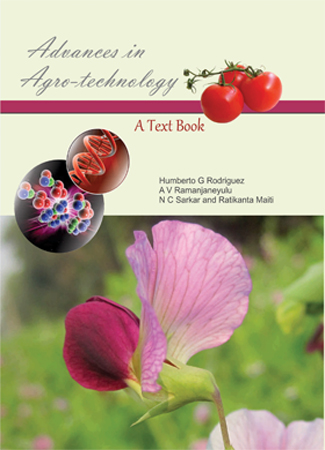
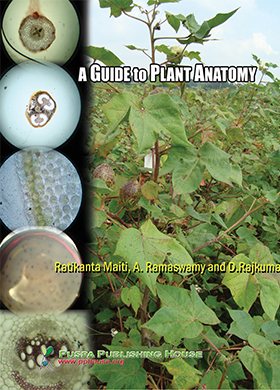
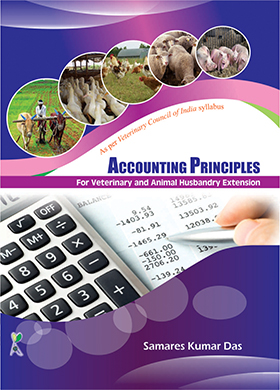
.jpg)
.jpg)


